The worst thing about boat guests is having to say “goodbye“ so quickly after you’ve said your “hellos”.

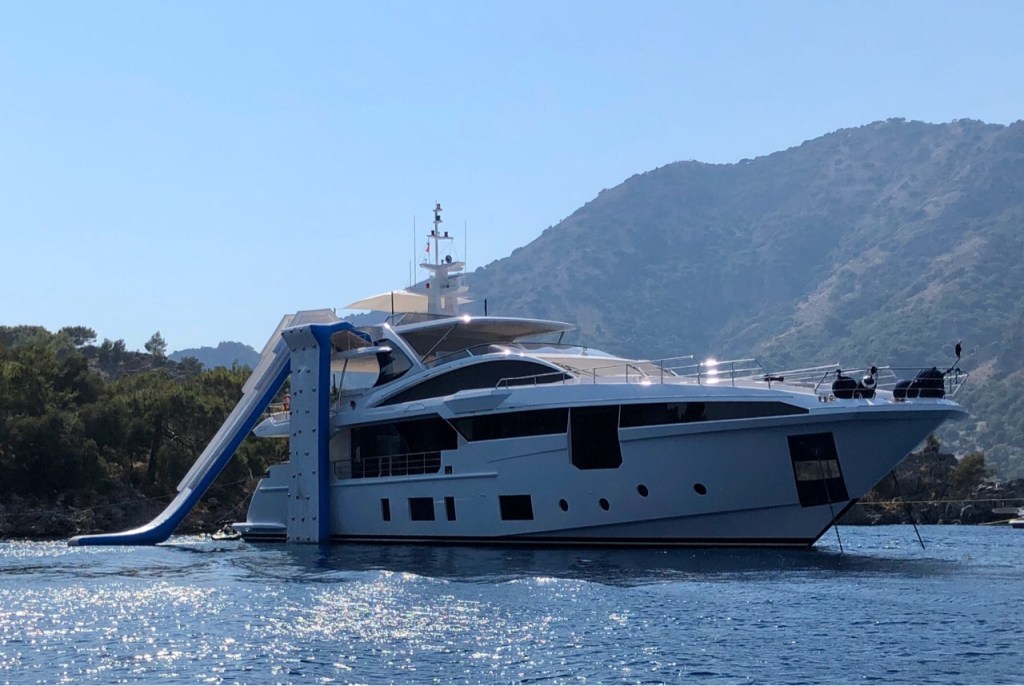
My sister Julia’s week-long visit was over in a flash but we had packed a lot in to a short space of time. Our final night together was spent at anchor in Göcek and a meal out in a restaurant on the pretty water front.

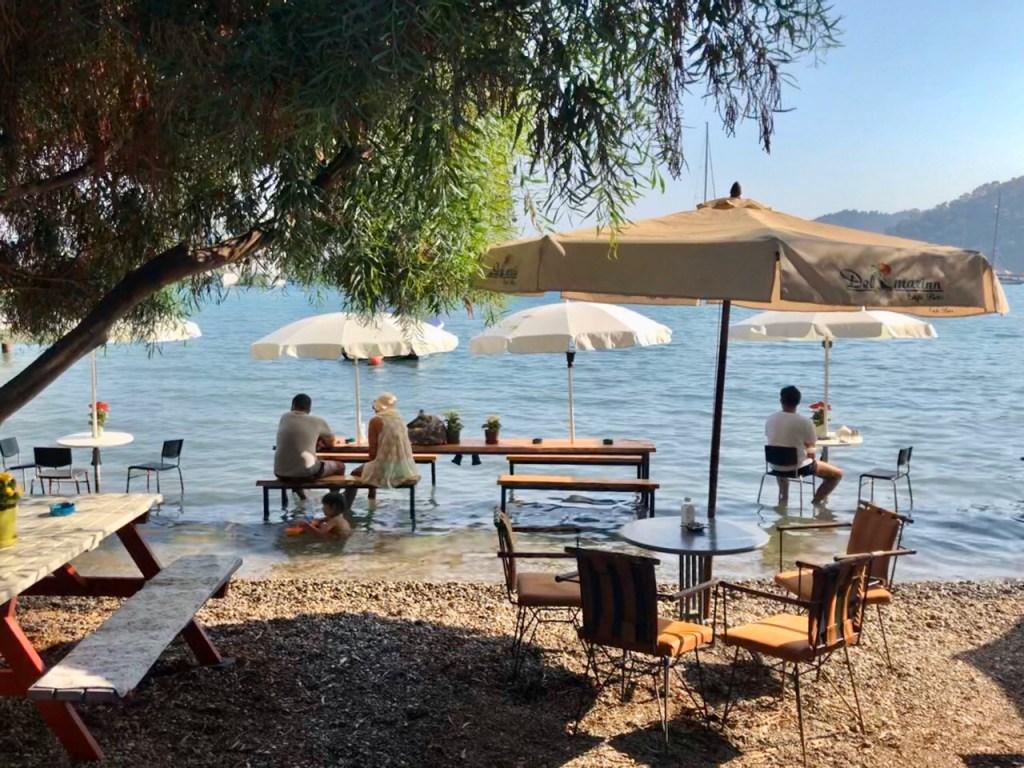

Earlier that evening Julia was having one last dip in the ocean when a dinghy drew up and we heard a big “Aloha” from its occupants.
Donna and Ross from Intrepid Kiwi had seen our New Zealand flag and dropped by to say “hello” so we invited them to come over the next night for sundowners on Sunday which they did and we had a lovely time setting the world to rights.

The waterfront of Göcek is dominated by six marinas and it was difficult to find a spot to park our dinghy without having to pay a fee. We ended up finding the perfect spot however, a little outside the town but very close to the Migros and Carrefour supermarkets so we were able to stock up for the next little while very easily.
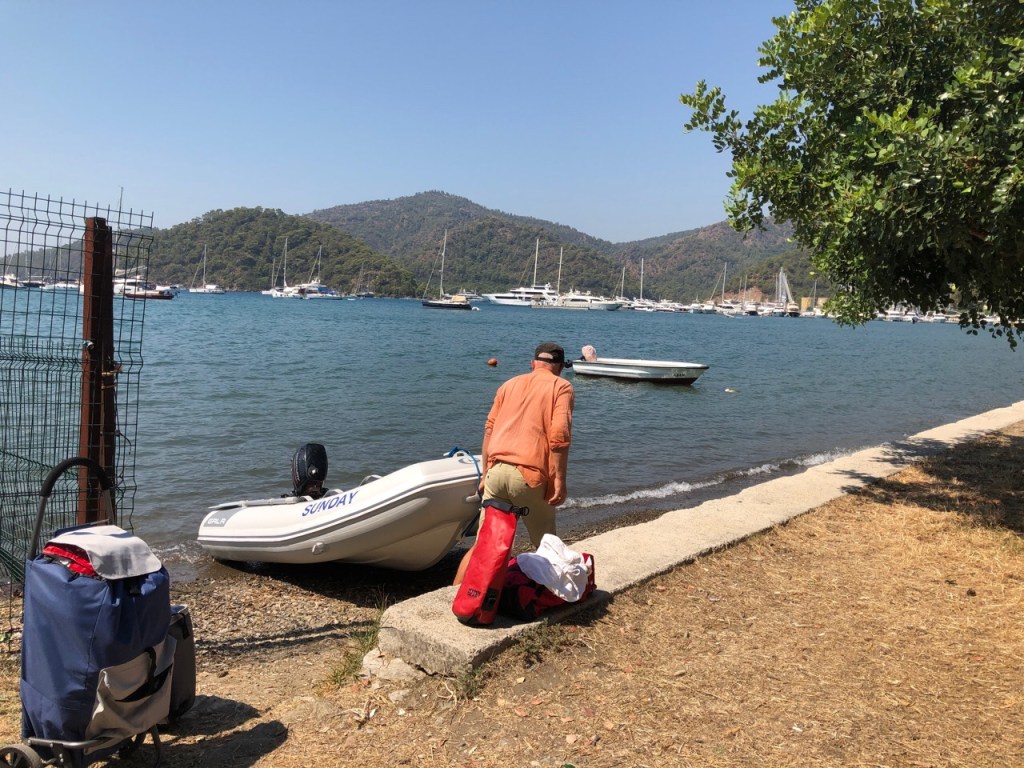
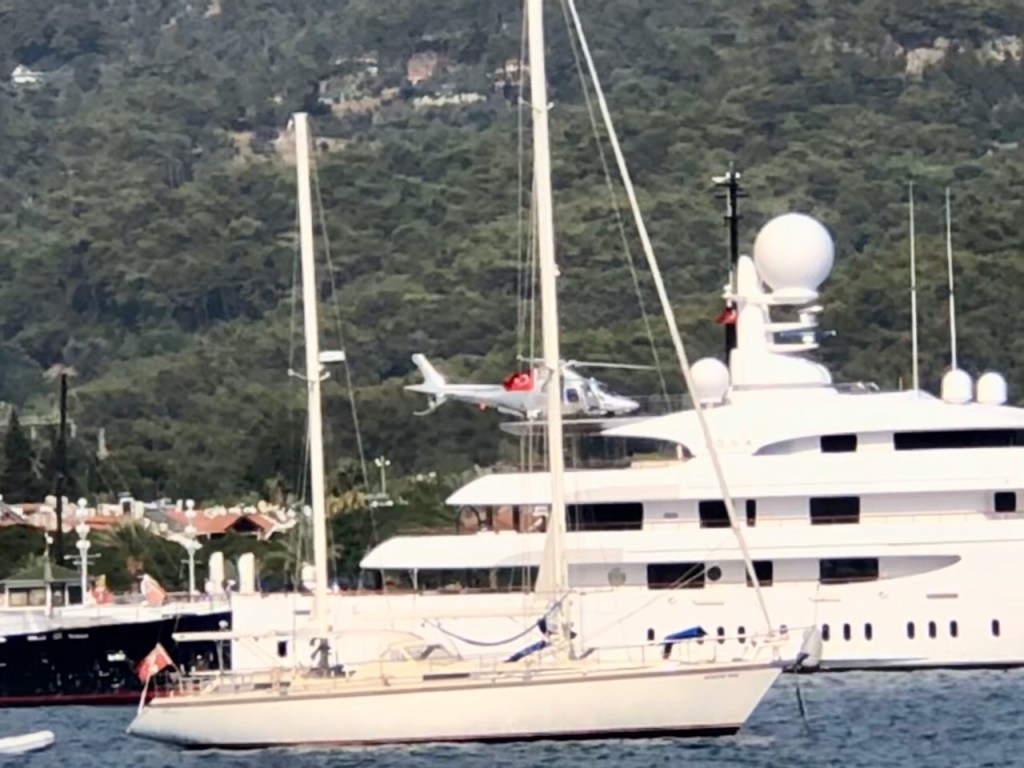
motor yachts and commercial boats than to cruising yachts
Then we were off again to do some more exploring. We headed south under motor but soon we were having a lovely sail and passed Fethiye travelling between 5.5 and 6.5 knots with winds of about 15 knots.

Close to our destination the wind turned dead ahead so we motored the rest of the way to Darboğaz Bay hampered somewhat by an unpleasant cross swell but it was nevertheless enjoyable as the scenery was stunning.
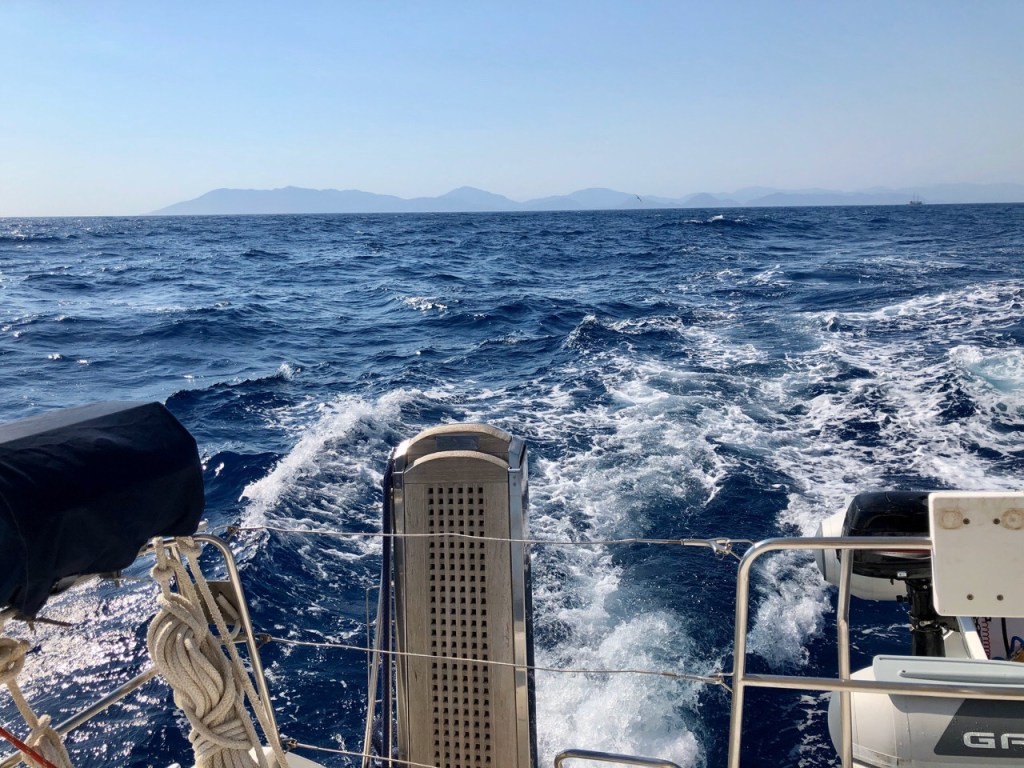
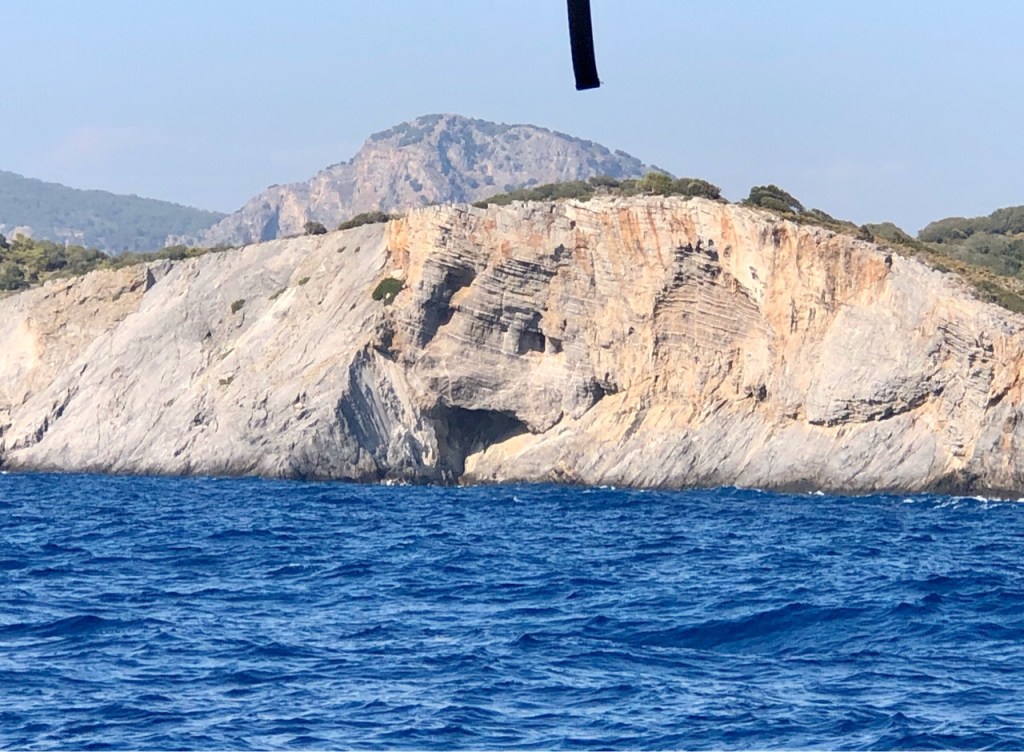

As we turned to enter the bay we were surprised to see that at its entrance was a tiny island littered with ruins. Turkey is covered in relics from the past and I suppose if you live here you tend to become blasé about them but they continue to amaze us every time!
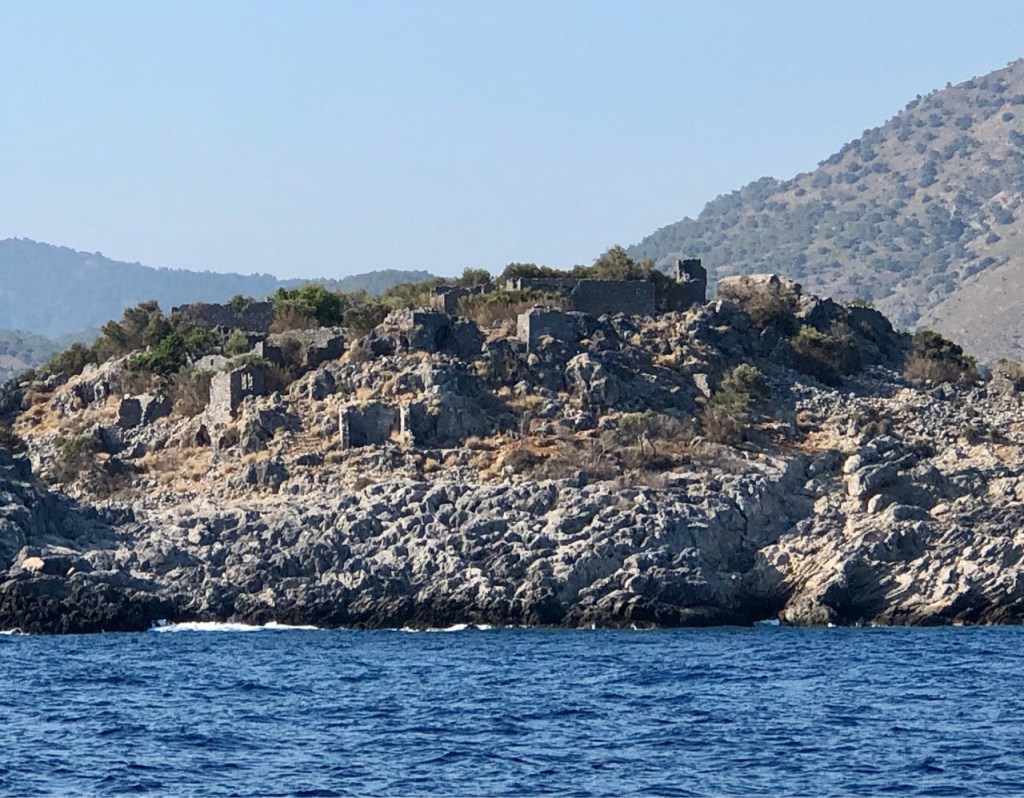
Before long we were tucked into this calm and beautifully sheltered bay on the east side of the isthmus on the Bozdoğan Peninsula.

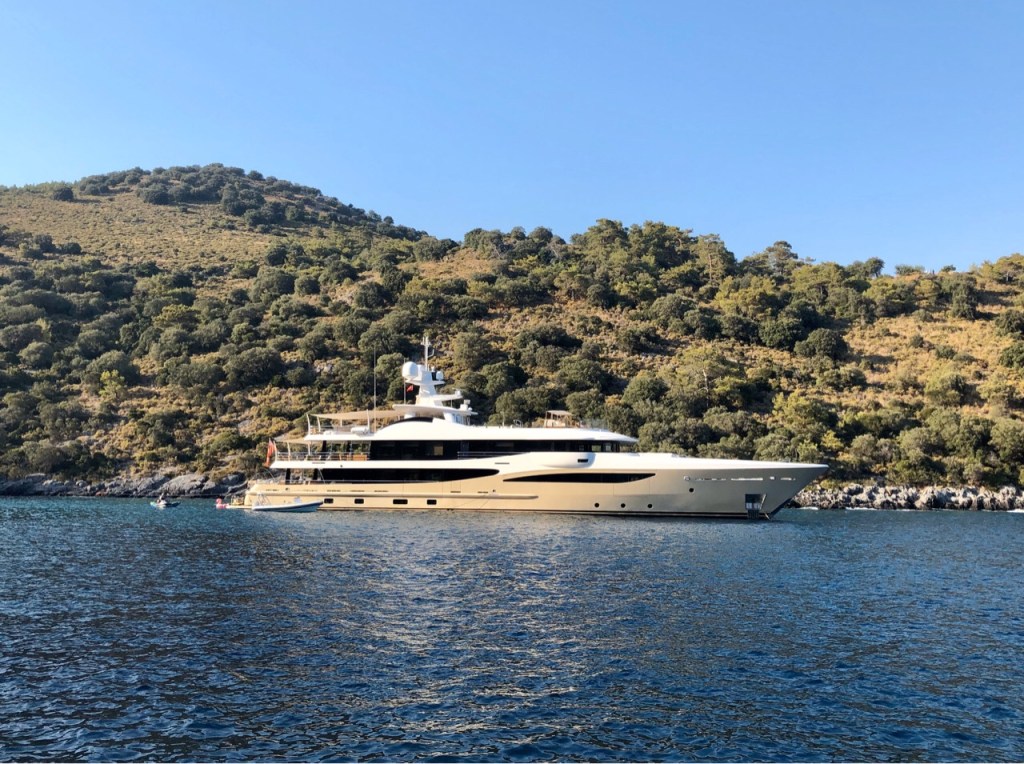
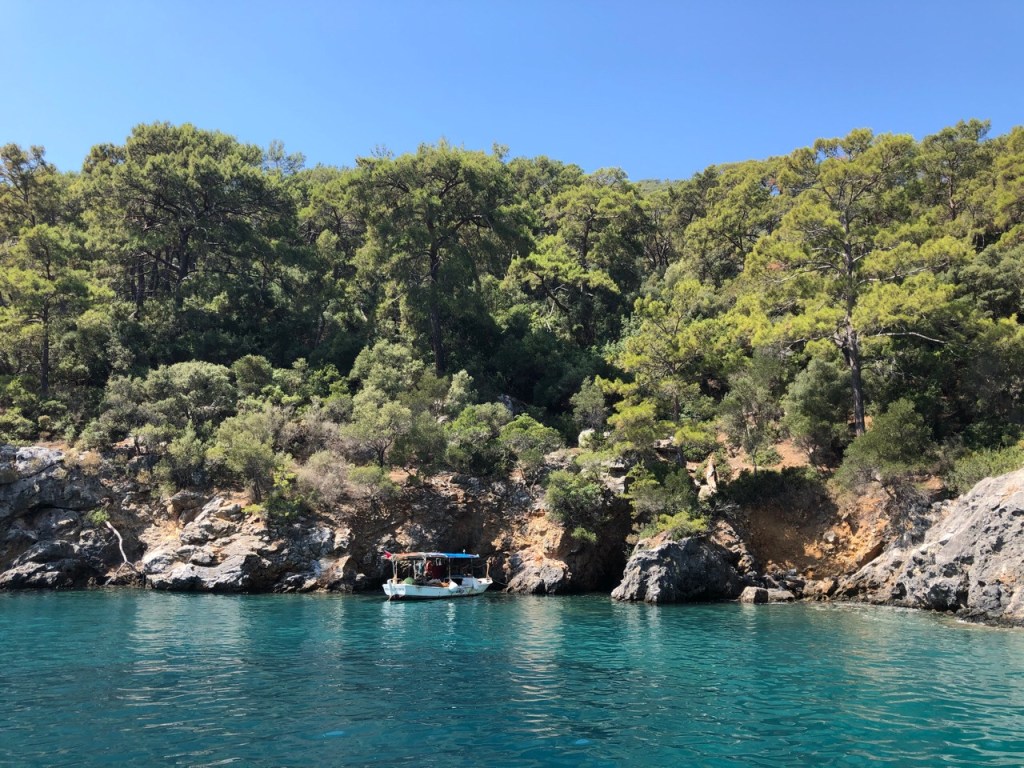
The bay was quite a popular tourist spot with day trippers arriving by foot and a couple of groups camping on the beach.

The following day a massive gulet loaded with (non socially distancing) tourists anchored/moored right next to us and we had fun watching them jumping off the boat and being taken for a whirl on a very scary looking water ride towed by a speedboat.
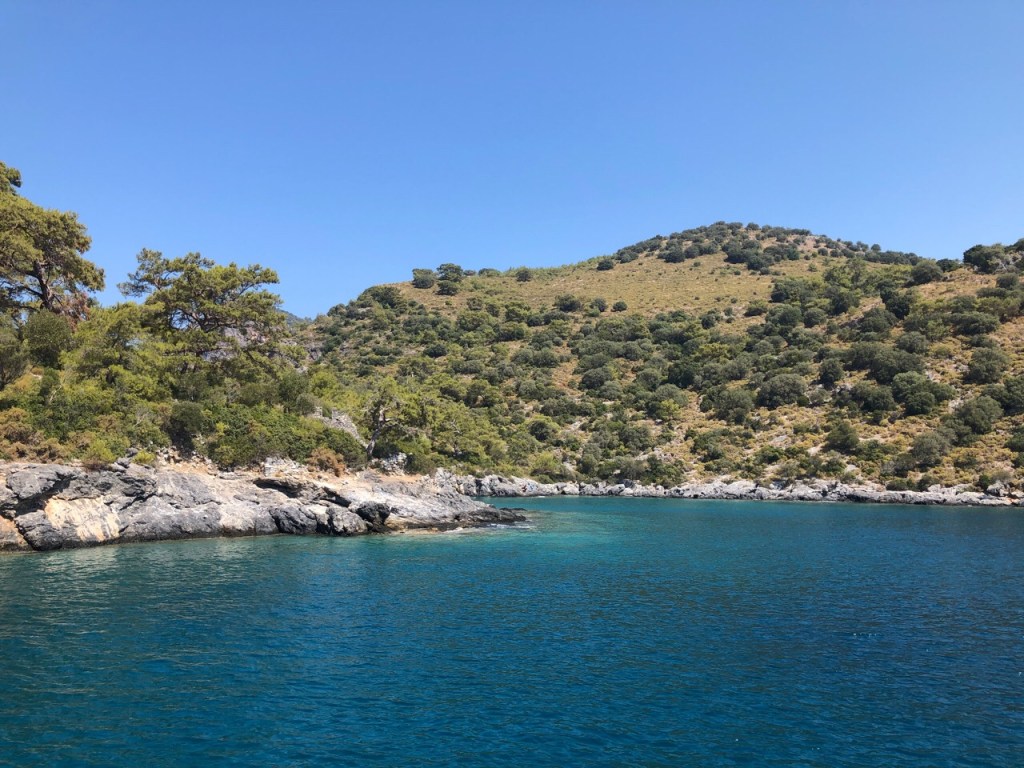


We went for a fabulous walk along a track that started at the small sandy beach and hugged the coast for a long way. We walked until we reached the narrowest point of the isthmus and were able to enjoy spectacular views on both sides.




Along the way we found some amazing ancient tombs (thankfully empty) and also some tumble down houses which might possibly have belonged to Greek Orthodox families at one time.
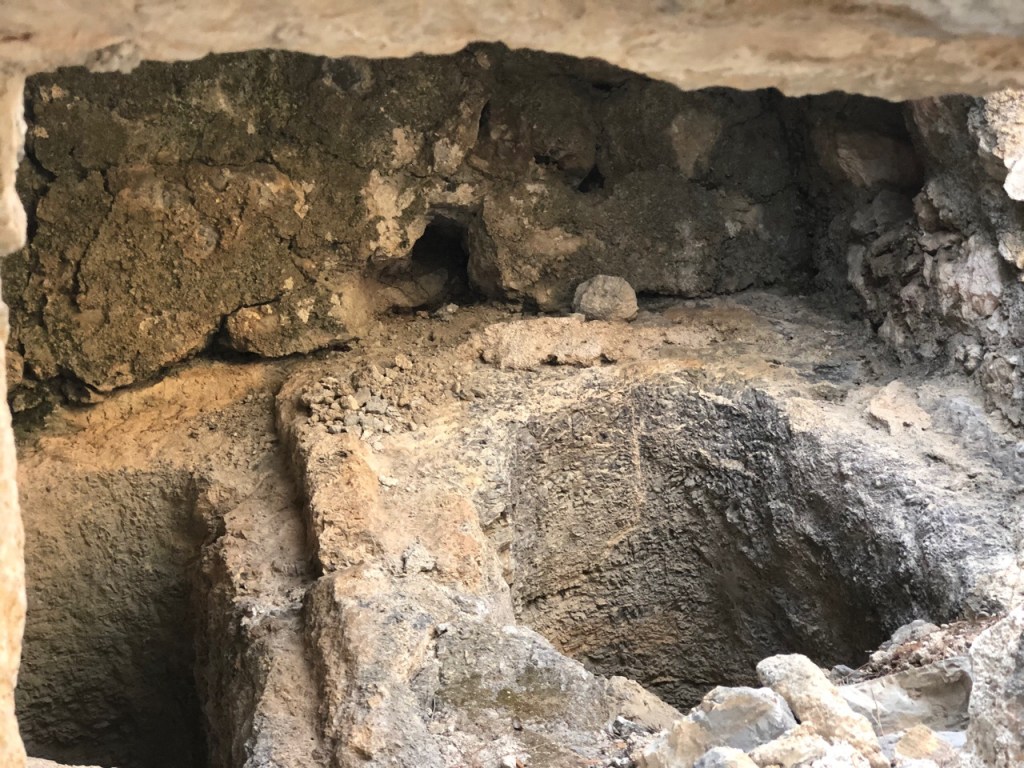
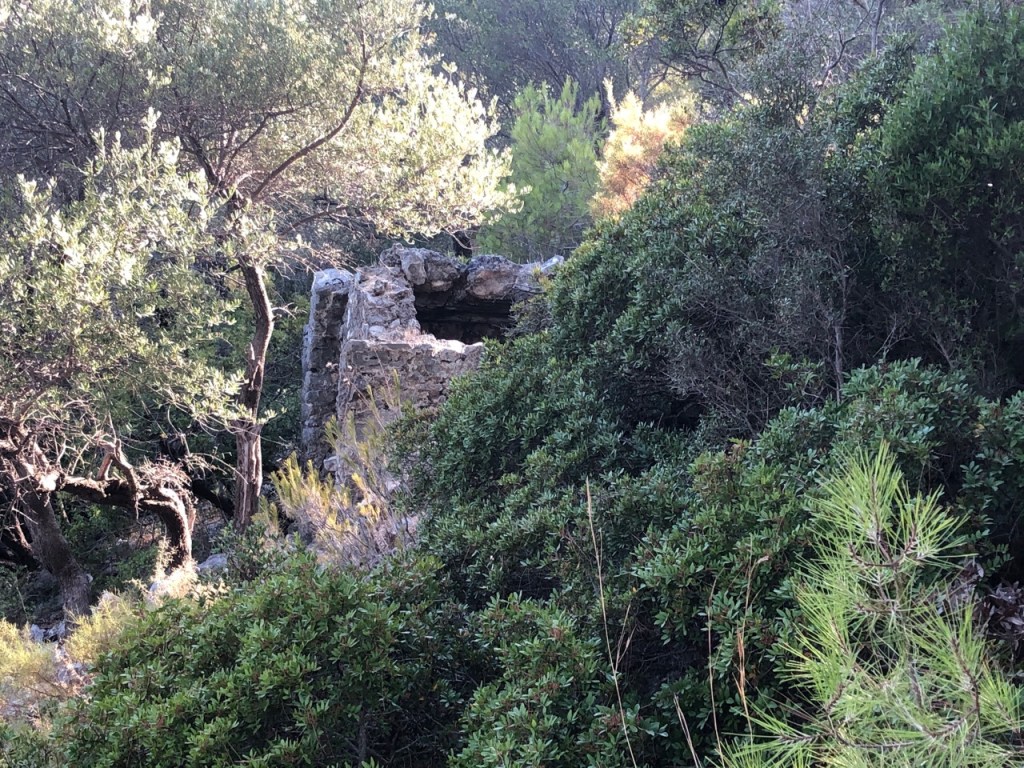

Where we were moored was not very far from the famous deserted village of Kayaköy where Greek Orthodox Christians lived peacefully until World War I and the rise of Turkish Nationalism. In 1922 when there was a massive population exchange between Greece and Turkey, the Christians (who had avoided the massacres) were forced to go to live in Greece and the village was deserted.
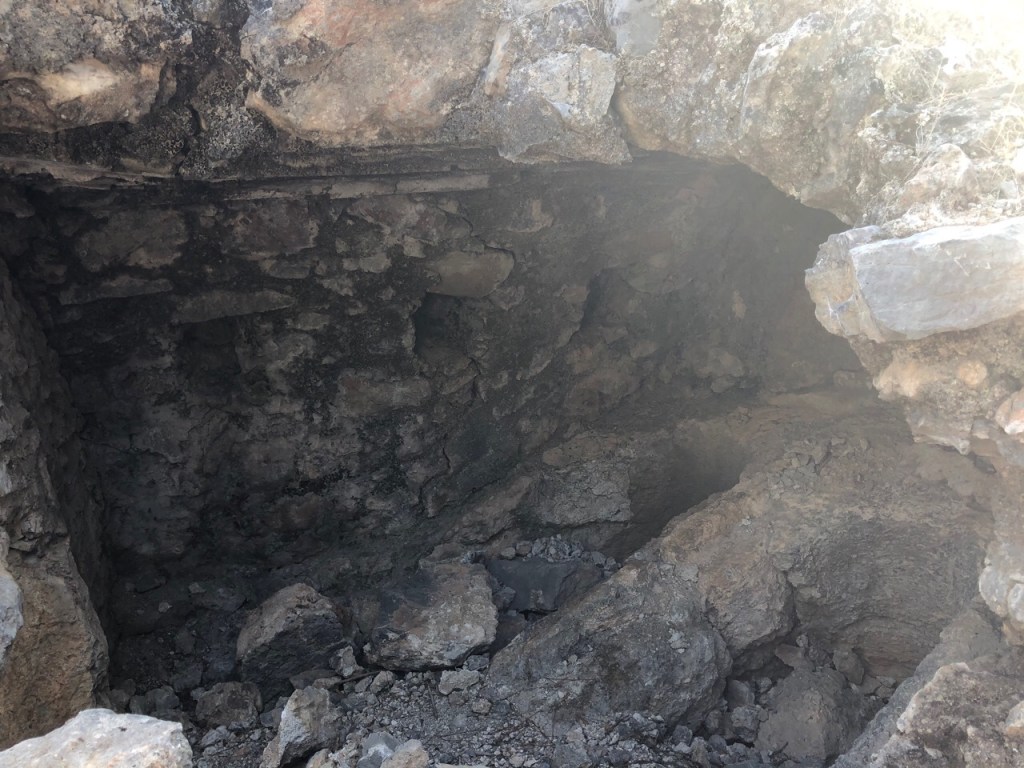
According to local tradition, Muslims refused to repopulate the place because “it was infested with the ghosts of Livisians (the Greek name for Kayaköy was Livissi) massacred in 1915”.
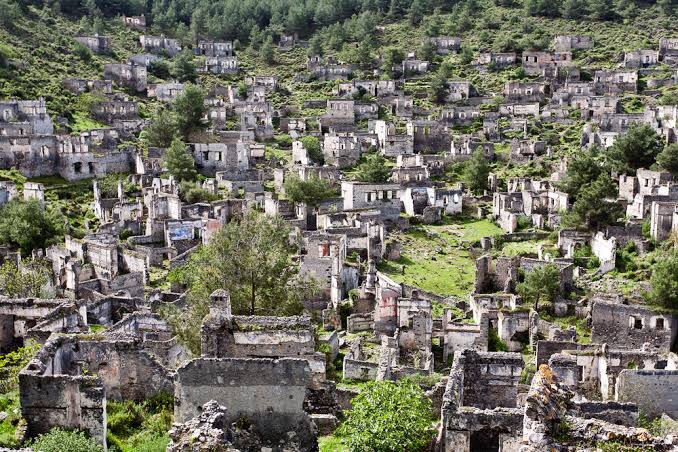
Leaving this bay fortunately proved to be easy – Jonathan swam to release the the strap that was tied round a big rock while I wheeled the webbing cable in. Then the anchor came up easily and we were ready to depart.
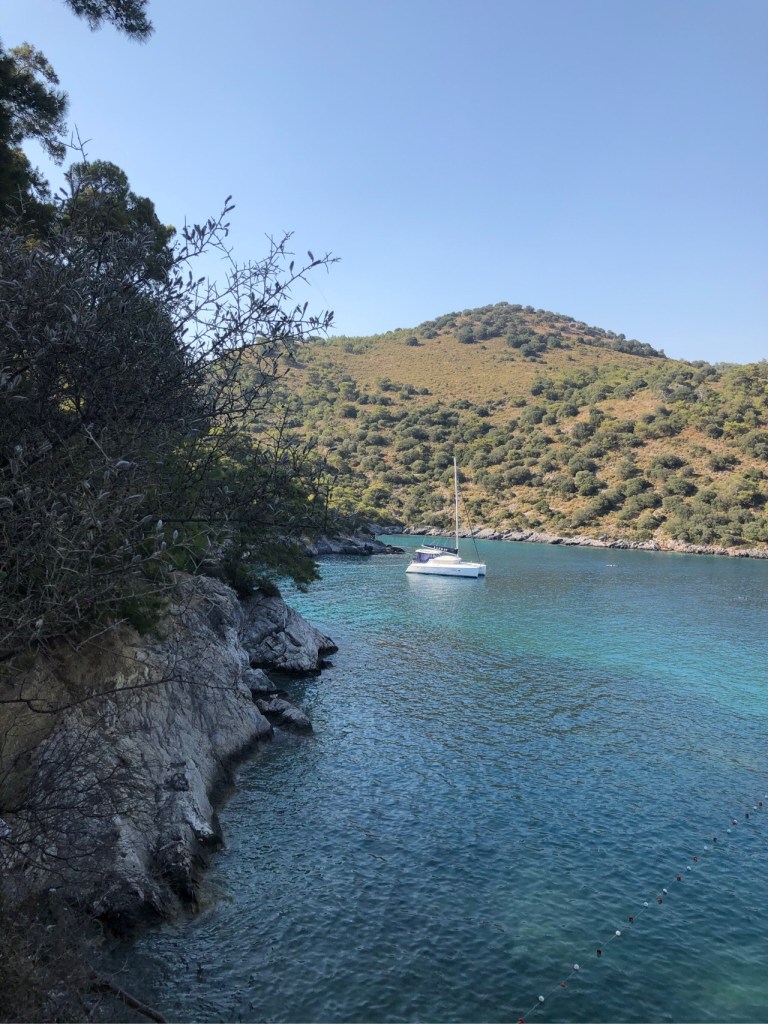


Soon we were enjoying a lovely sail with the wind behind us “goosewinging” – the main sail turned one way and the foresail turned the other way. There was a good steady blow at a moderate 12 and 14 knots. We were going well and enjoying surfing down the occasional big wave.
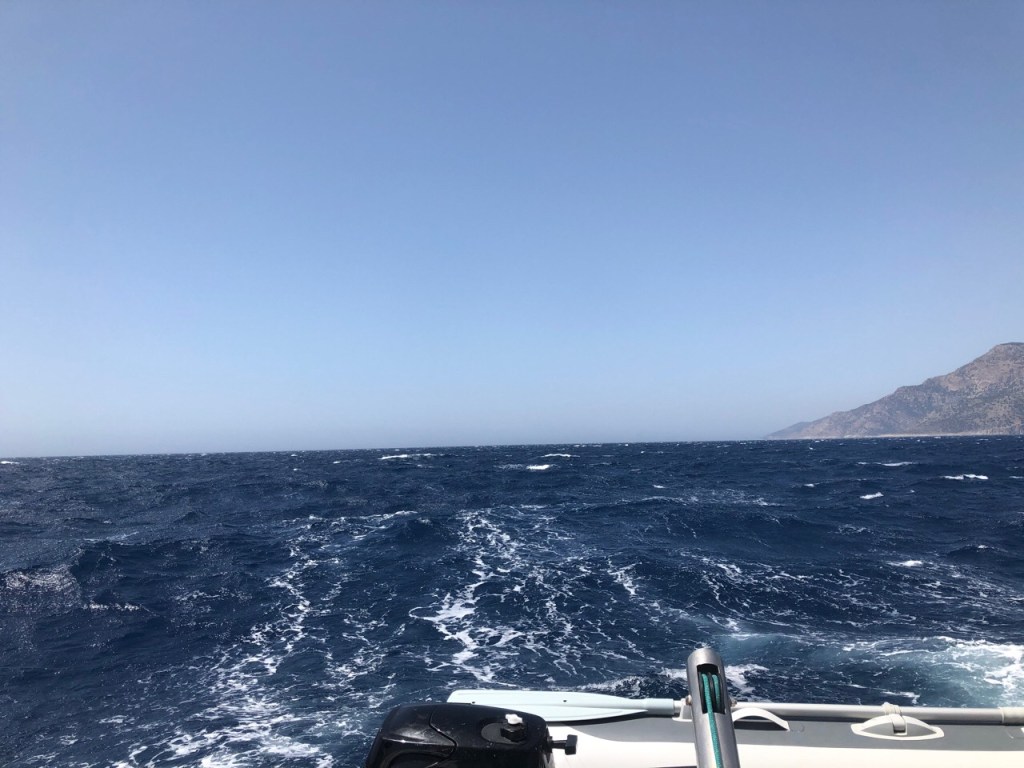
After a while the wind increased to over 20 knots and we started to speed along a little too fast.
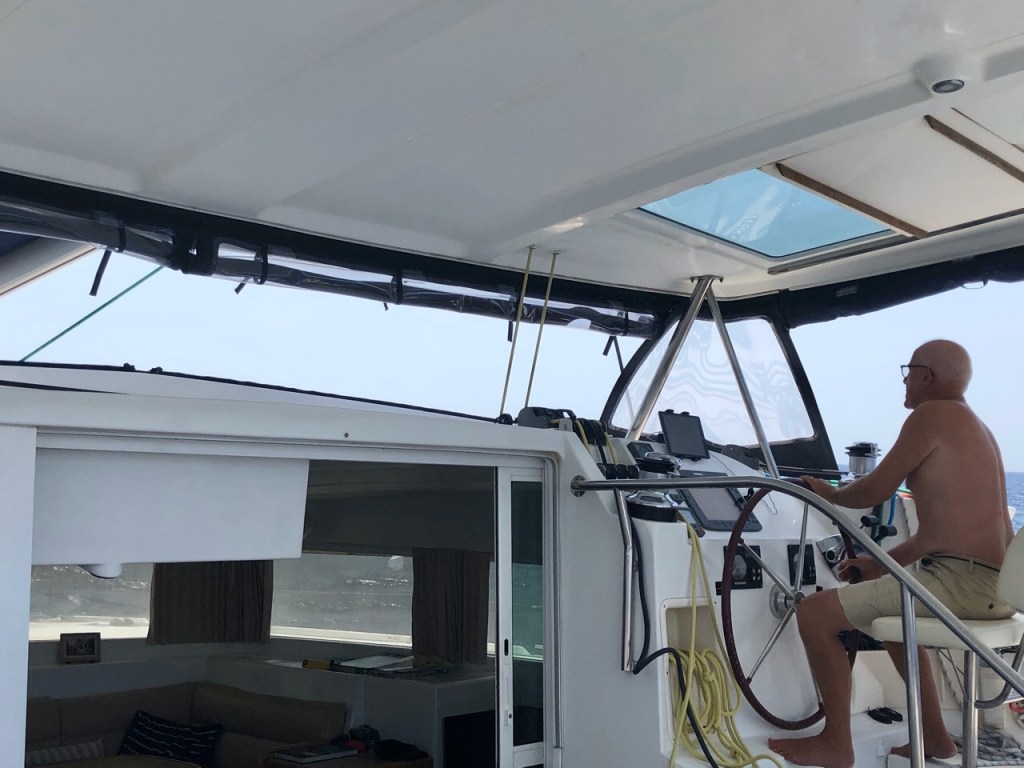
When you are sailing in a monohull it is easy to tell if you are over canvassed – for a start your boat would be leaning over more than is comfortable. In a catamaran there is no tipping over so you don’t get that warning and as this was one of the first times we had been in a bit of a blow with big seas we reduced our sail area.
First we reduced the headsail and then had to wind it right in as we were still travelling around nine knots which is fast for Sunday.
Then the wind increased to 30 knots so we decided this was a good time to see if the reefing system on Sunday’s mainsail worked OK. We were feeling a little apprehensive because on our previous boat Bali Hai, until we got them fixed, the reefing lines used to jam up and cause us all kinds of anxiety – always in the roughest conditions of course.
Fortunately, everything worked really well and we managed to put two reefs in the main and we were now sailing comfortably between 6.5 to 7.5 knots.
We arrived at our anchorage in Firnaz Koyu opposite the town of Kalkan by mid afternoon and although it was very sheltered the wind was still howling through at around 25 knots.
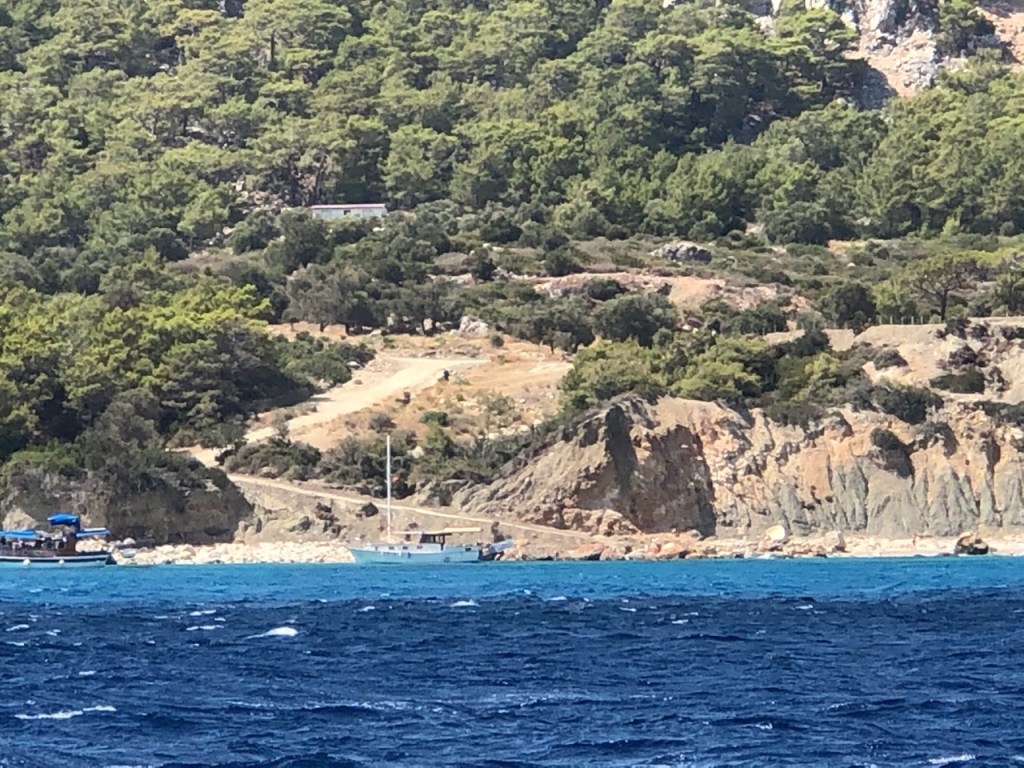
We anchored quite a way out as there were many other vessels (mostly tourist boats) which were anchored and with a long line to shore. Even if there had been room for us I don’t think we would have chanced trying to get in with the wind the way it was so we just anchored with heaps of chain out.
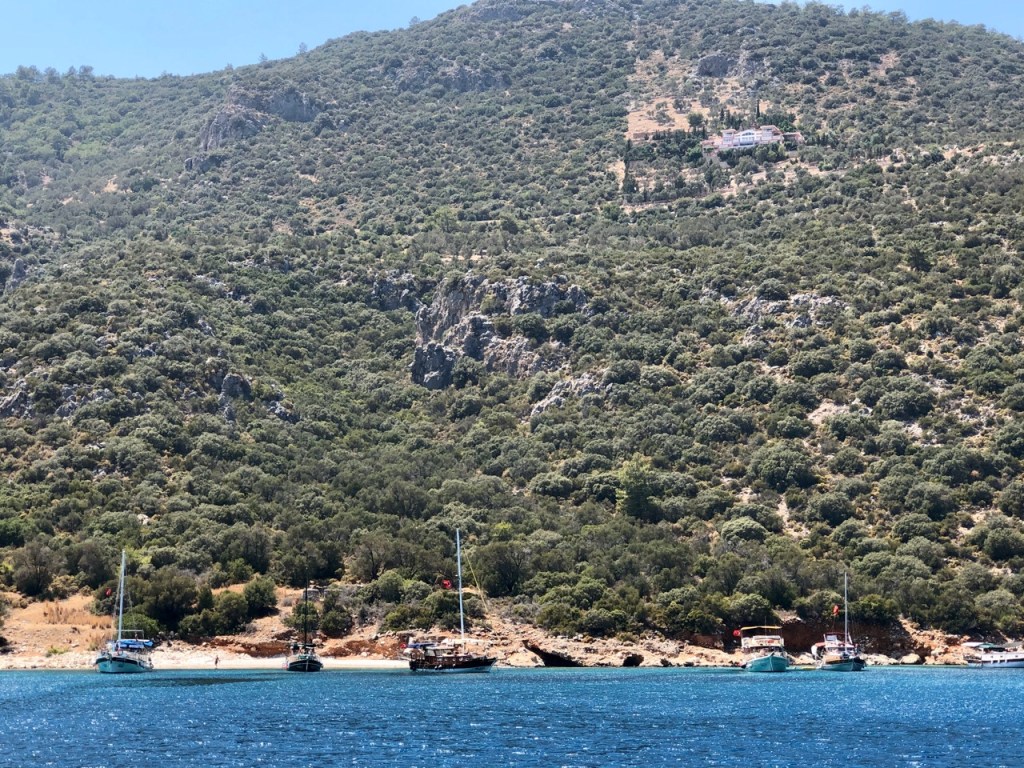

Annoyingly we realised that the holding wasn’t too good which was dodgy in such a blow so we started over and this time put out 100 metres of chain in about 12 metres of water – luckily the anchor held well.
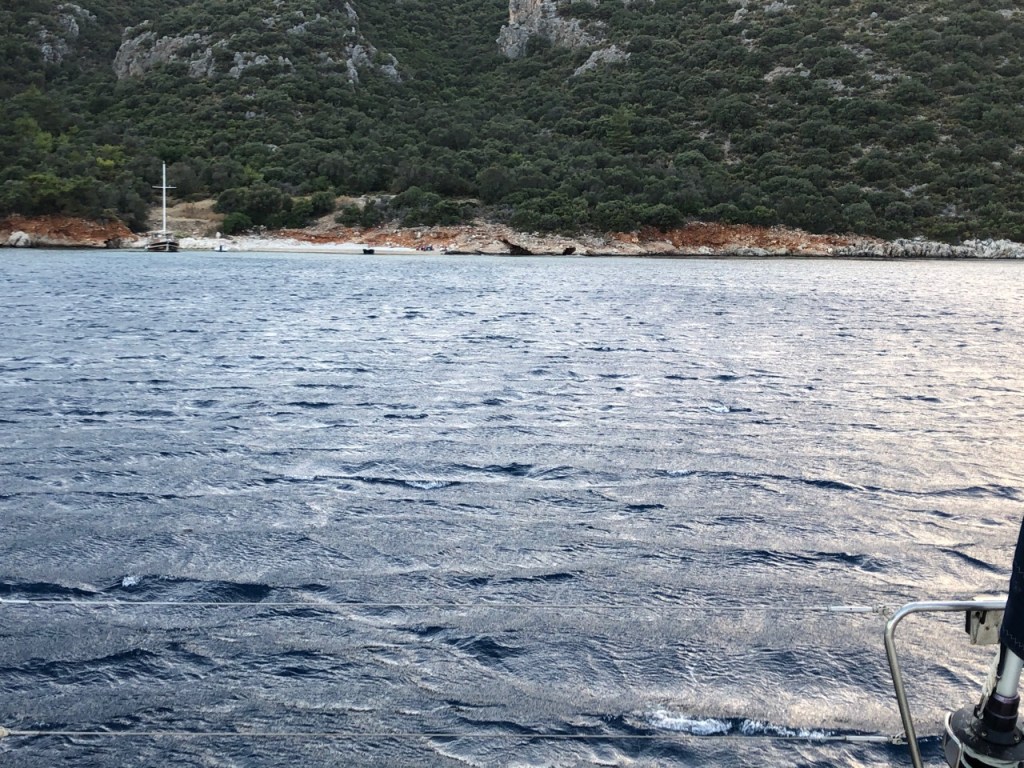
Later on a couple of yachts stopped to ask how much chain we had put out and we suggested to one, a Jeanneau 44i like Bali Hai – flying a German flag but the skipper sounded Canadian – that we would listen out for them on a certain channel on the radio in case they had any problems anchoring. It was that kind of night when things can go wrong and because the holding was not brilliant and there were high winds, it was better to be safe than sorry.

Much later that evening we turned the radio off as everyone seemed happily settled. Jonathan was checking round the boat as he does each night when he suddenly yelled out “there’s somebody in the water!”
Then Jonathan realised that the Jeanneau’s dinghy was missing and the guy had jumped in to rescue it. It was such a rough night that we feared for his safety so Jonathan quickly got our dinghy down off its davits and into the water. Meanwhile I tried to radio to let them know assistance was at hand but there was no response.
As he started up the outboard I signaled the other boat with a high powered torch and yelled out that help was coming. We learnt later that they had tried to radio us but we must have just switched our radio off.

By the time Jonathan had reached the yacht the skipper had swum back empty handed. The wind was so strong that it moved the dinghy like lightening towards Kalkan.
The other skipper quickly jumped into our dinghy and using a spotlight followed the direction of the wind and waves and eventually located the runaway runabout. The skipper wriggled across and started its outboard and soon they were both on their way back.
It took about 10-15 minutes to get to the dinghy but a lot longer to get back battling the wind and waves. High drama!

The following day the skipper and his crew of one left quite early but as they left, they swung by to thank Jonathan for helping to rescue their recalcitrant dinghy.
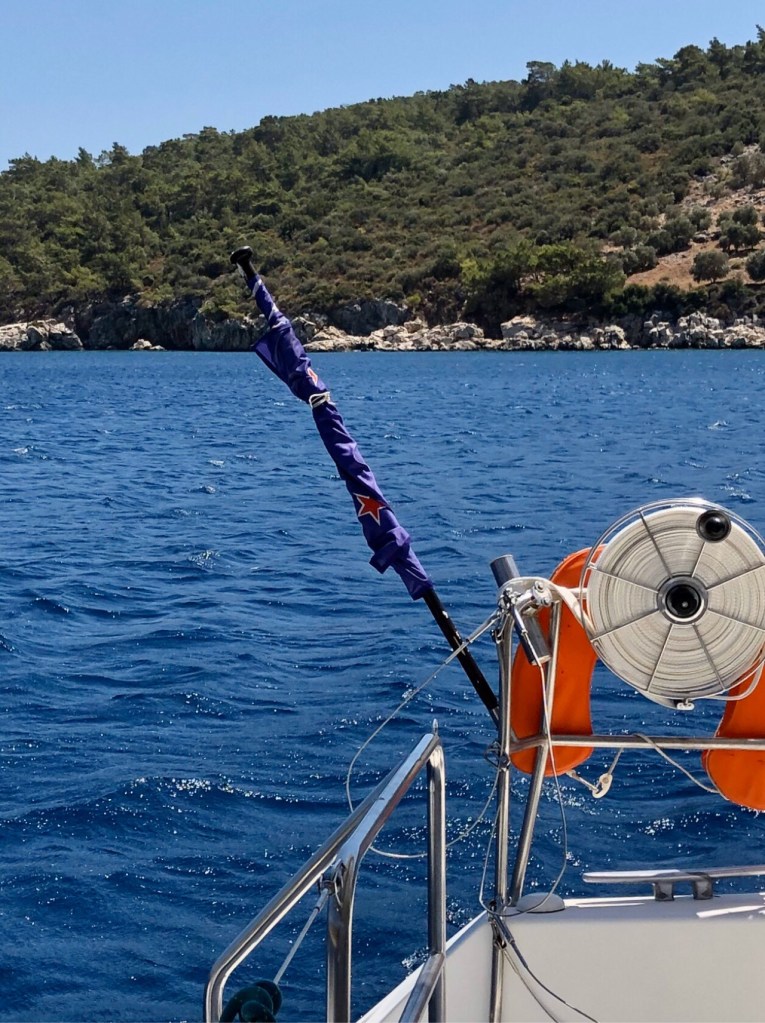
That day we decided to stay out and catch up with our washing – it was perfect drying weather after all!
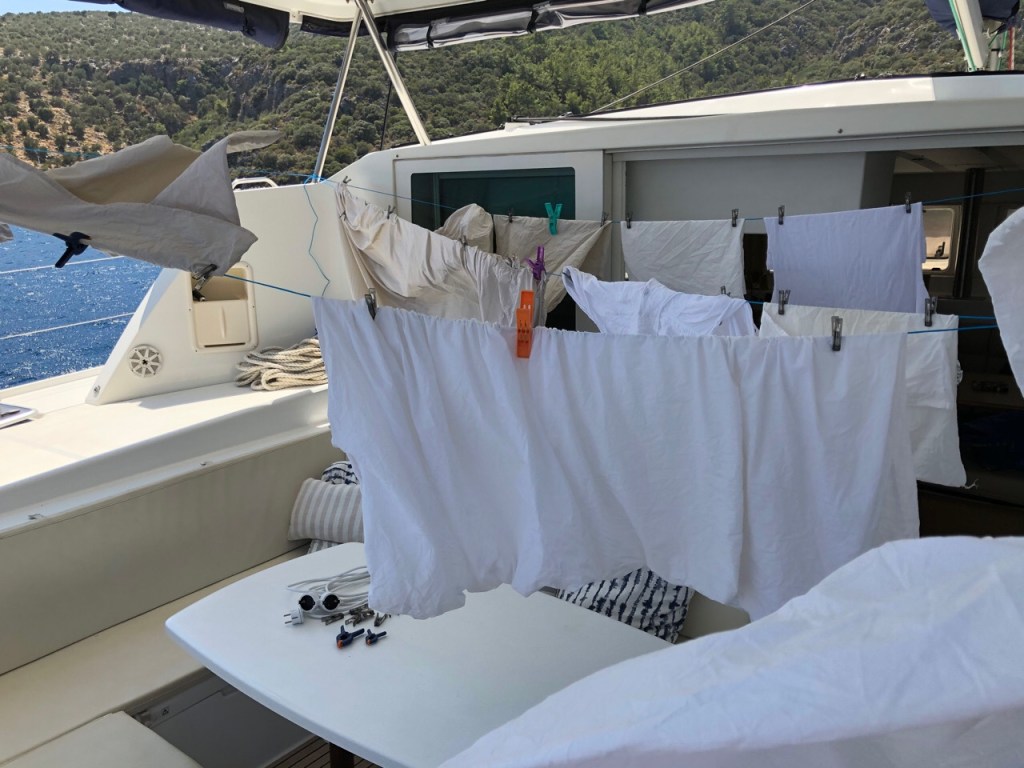
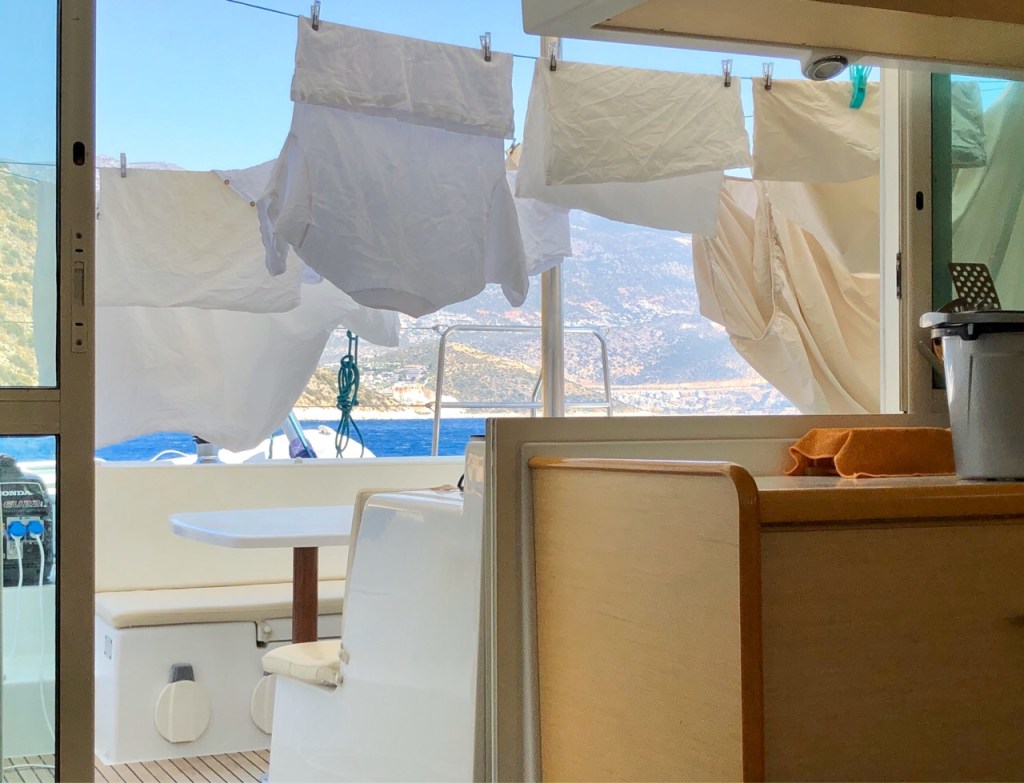

Leave a comment